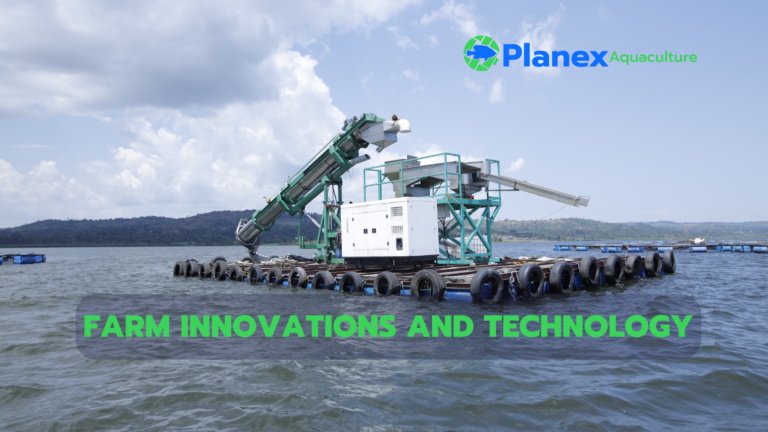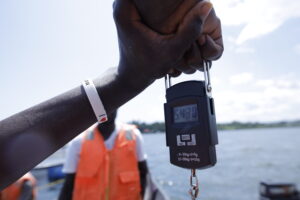When it comes to global food supply and improvement of livelihoods, fish farming is one of the first thought-of industries. It is so clear that Aquaculture is playing a crucial role in providing a sustainable source of protein. This industry does not only support food security but also drives economic growth in various regions of the world. Overtime, fish farming has evolved from rudimentary systems like ponds to highly developed and advanced operation. Currently, technology and innovation are the main factors spearheading the transformation of this field of fish farming, addressing most of the traditional challenges and limitations paving way for more sustainable and efficient Aquaculture. In this blog, we focus on the current status of global aquaculture innovation, the necessity of adopting modern farming technologies, and the latest biotechnological, digital, and automation advancements reshaping the industry.
Why farmers need to adopt modern farming techniques
Enhanced Efficiency and Productivity
Adoption of modern farming technologies is essential if fish farmers are to remain competitive and sustainable in today’s rapidly developing aquaculture industry. The most important reason for adoption of these innovations is productivity. Traditional fish farming methods in most cases cannot keep up with the increasing demand for fish, stimulated by the increasing population and dwindling numbers of wild fish stocks. Modern technologies, including RAS and automated feeding systems, permit farming of fish at a higher density while achieving better growth rates and better feed conversion rates. All these improve productivity and ensure that the fish farmer can produce more fish on less space and with less resource input, thereby meeting market demand and increasing profitability.
Environmental Sustainability
Besides highly increasing the yields, modern farming techniques also support sustainability of fish farming operations. Traditional approaches can be resource-intensive, thereby serving as a factor of environmental degradation due to excessive use of water, pollution, and habitat destruction. Innovative solutions like RAS and aquaponics recycle water and nutrients, therefore reducing waste and saving resources. As for further sustainability indicators, these are manifested by the system through Integrated Multi-Trophic Aquaculture (IMTA) and polycultures that considerably diminish their environmental impact as they follow the natural ecosystem model and are significant protectors of biodiversity. Fish farmers using modern technologies can greatly minimize their impact on the environment, meet all the regulatory requirements for such operations, and have a long-term guarantee for natural resource preservation.
Fish Health and Quality
Improved health and quality of the fish are, in turn, ensured through advanced monitoring and controlling systems. Advanced technologies provide continuous real-time tracking of water quality parameters, fish behavior, and growth rates, upon which the informed farmer makes decisions in a timely manner. Better detection and, consequently, control of diseases minimize mortality rates and reliance on antibiotics; therefore, ensuring healthy fish and increased quality of fish products. Not only does it improve the entire yield, but it also increases the quality of the produce as consumers are more likely to buy these fish from a marketable perspective since the demand for sustainably and ethically farmed products is increased.
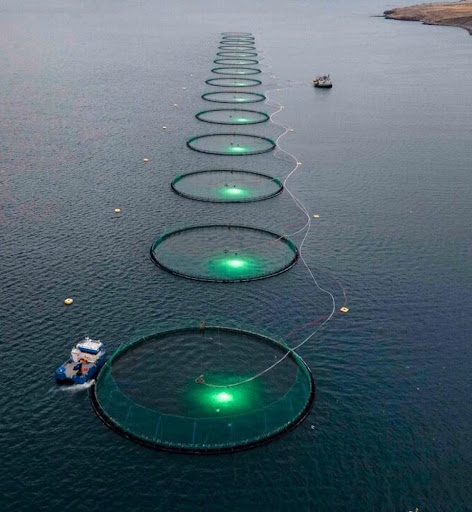
Biomarine technology
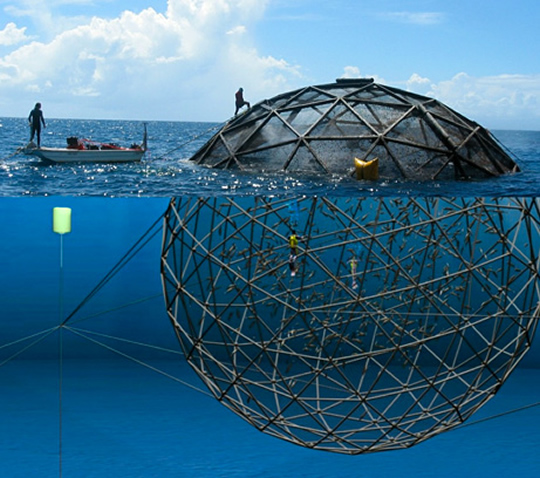
Movable deep sea farm
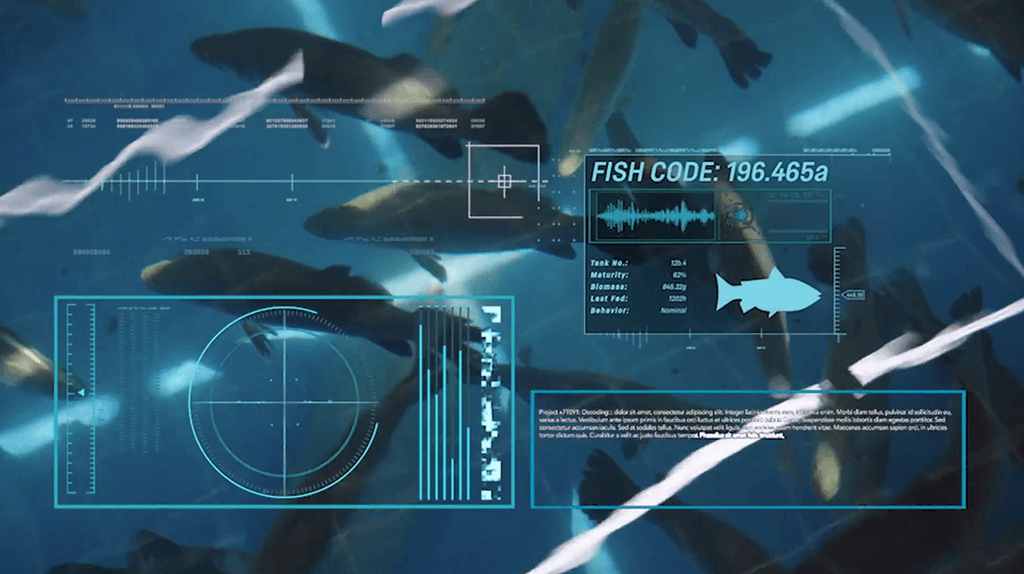
Fish health and quality management
Operational Efficiency
The use of modern technologies reduces labor costs and greatly boosts operational efficiency in fish farming. Automated feeding and water quality monitoring systems reduce labor and offer farmers more time to concentrate on strategic aspects of the business. This is more helpful in remote or resource-poor areas where labor can be expensive or scarce. In addition, the use of smartphone apps and remote monitoring gives farmers flexibility, which thus gives time to manage their operations from wherever they are, ensuring continuity and a quick response to any arising problem.
Key areas of Innovation
1. Recirculating Aquaculture Systems (RAS)
RAS is a one of the modern fish farming approaches that deviates from the traditional outdoor pond culture. Instead of growing fish in open ponds and raceways, RAS maintains fish at high density, indoors, within a controlled environment. The critical factors considered in these systems are water saving ability, environmental sustainability, and disease management. Through reused and recycled water, RAS maximizes the use of water in relation to fish growth.
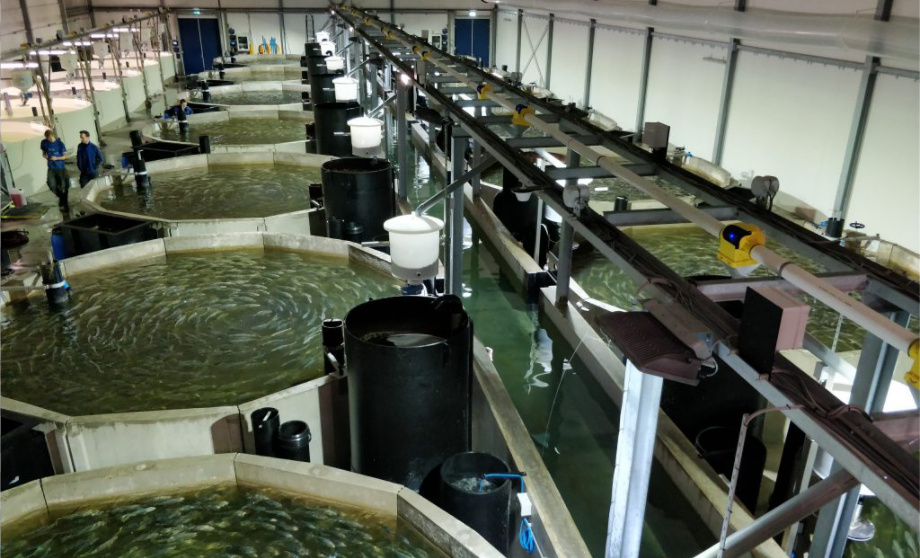
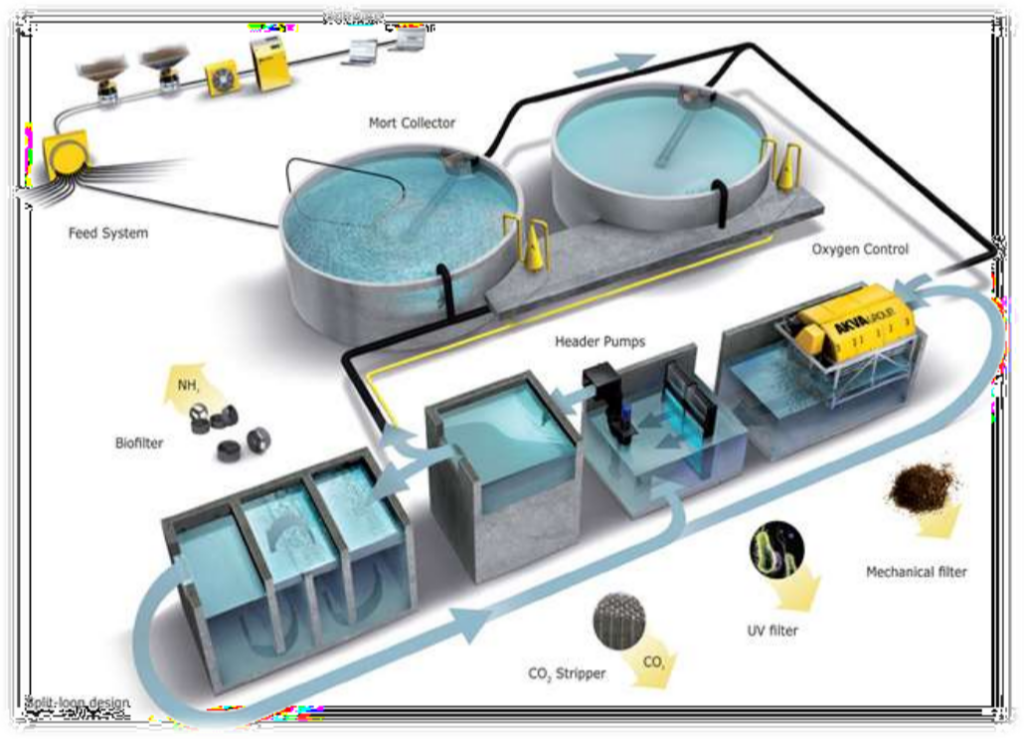
How RAS works;
- Closed-Loop Circulation: Water circulated within RAS happens in a completely closed loop. Tanks are used to rear fish, and water is subjected to continuous filtering and clean-up before being recycled. Freshwater addition is only done to make up for water lost through evaporation and also in water waste removal.
- Biofiltration: This is the use of a biofilter for water purification. Waste products and uneaten feed, both harmful to the fish, are removed using this filter.
- Nutrition and Oxygen: Fish in this system are to be continually supplied with clean water at the right temperature with an optimal level of dissolved oxygen. Full nutrition through adequate feeding is essential for growth.
- Controlled Environment: This system permits year-round fish growth by keeping temperature, pH value, and oxygen saturation at the required levels.
Benefits of RAS
- Maximized Production in limited space: RAS provides the opportunity for rearing fish under high-density conditions in limited spaces for maximizing production.
- Environmental Control: Critical to the system is that fish growth does not depend on the season; optimal conditions can be maintained throughout the year meaning fish production throughout the year.
- Location flexibility: This system of fish farming can be set-up anywhere provided minimum required water is available. This comes with an added advantage like establishment of the farm close to large markets, reducing the cost of transportation.
- Harvesting and Disease Control: Easy harvesting and manageable disease break-out due to controlled environments.
Although the RAS model of fish farming is very promising, it remains an experimental form of agriculture. Economical viability remains to be conclusively shown, but the approach is sustainable.
2. Integrated Multi-Trophic Aquaculture(IMTA)
This practice involves cultivating different species from different trophic levels within the same system in a balanced and symbiotic environment. For instance; such as fish, shellfish, and seaweed, to create a balanced ecosystem that minimizes waste and maximizes resource use. This technological development aims at making current-day aquaculture more environmentally friendly and economic than its conventional monoculture modes.
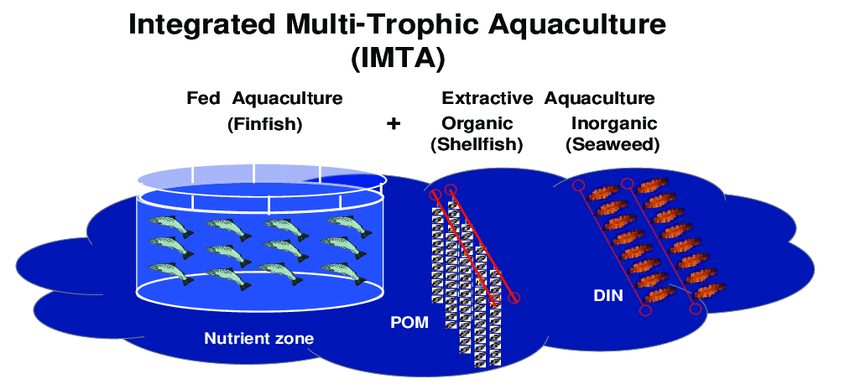
How IMTA works;
This Aquaculture system works on the principle of ecosystem balance, where different species interact and benefit from each other’s presence. Now, with respect to this type of IMTA system, there are commonly three different types of species that are cultivated: fish, shellfish, and seaweed.
The fish here, either Tilapia or Salmon, produce waste composed of uneaten feed and body wastes. These wastes become nutrients for other species in the system. Shellfish—consisting of mussels and oysters—filter particulate matter from the water column; hence, its presence ensures and helps improve the clarity of water. The seaweed absorbs dissolved nutrients like nitrogen and phosphorus, which are byproducts of fish waste.
This absorption process aids in water purification and leads to an environment that is clean and healthy for all cultured species. Keeping in mind the basic principle “nutrient recycling,” this system helps in the minimization of waste while being a sustainable and effective use of resources
Benefits of IMTA
Environmental: IMTA can reduce the pollution generated by traditional aquaculture, which results from nutrient cycling and minimizing waste discharge into surrounding waters. Natural water filtration by shellfish and seaweed reduces the pollution load in water bodies and results in less need for artificial water treatment. An ecological approach helps in the conservation of natural resources, which in turn helps in the protection of aquatic ecosystems from undesirable deterioration.
Economical: By diversifying the production, this system of aquaculture comes with various advantages. Multiple species in one system reduce the risk associated with market fluctuation and disease outbreak that might affect a single species. This stabilizes income streams and opens up new market opportunities. For example, seaweed can be sold for food, cosmetics, and biofuel production, and shellfish can be utilized as high-value seafood. There is also improved water quality and the prevalence of disease in IMTA systems, which results in a reduction in the cost of operations and an increase in overall productivity.
Operational: IMTA promotes practices that are more sustainable and efficient. The integration of different species will establish a balanced ecosystem that will reduce dependence on chemical and antibiotic applications. This approach does not just enhance the health and growth of the species being farmed; it also fits well with the increasing demand for sustainably sourced seafood. By adopting IMTA systems, fish farmers can become more sustainable, environmentally friendly, and resilient in terms of economics, thus acquiring an advantageous position in the fast-changing field of aquaculture.
3. Selective Breeding and Genetic modification
Selective breeding and genetic modification are advancements in biotechnology that are revolutionizing modern fish farming. This technological development offers unprecedented opportunities to enhance fish growth, disease resistance, and improve nutritional quality of farmed fish.
How it works;
Selective breeding involves the careful selection and mating of individuals with desired traits over multiple generations. By choosing parent fish with favorable attributes such as rapid growth, disease resistance, and superior taste, breeders can gradually enhance these traits in subsequent generations. This process relies on the natural variation present within fish populations and the principles of heredity to selectively propagate desirable traits. Over time, selective breeding leads to the development of fish strains that are better adapted to the demands of aquaculture, resulting in higher yields, improved disease resistance, and enhanced product quality.
Genetic modification, on the other hand, involves the deliberate introduction of specific genes into the natural genome of farmed fish to produce fish with desired traits. This precise manipulation of genetic material allows for the rapid development of fish with targeted improvements, such as enhanced disease resistance, faster growth rates, and improved nutritional profiles. Genetic modification techniques may involve gene editing technologies like CRISPR-Cas9 or the introduction of transgenic DNA sequences. By introducing genes responsible for producing beneficial proteins or regulating the main metabolic pathways, genetic modification enables fish farmers to engineer fish with superior traits tailored to meet the evolving needs of aquaculture.
Benefits
To the Fish Farmer:
From a producer’s standpoint, these technologies enable the development of fish strains that are better suited to the challenges of aquaculture. By selectively breeding for traits such as disease resistance, fast growth, and efficient feed conversion, fish farmers can enhance the resilience and productivity of their operations while reducing reliance on antibiotics and other treatments. Additionally, genetic modification holds promise for addressing environmental concerns in aquaculture, such as reducing the environmental footprint of fish farming or improving the sustainability of feed ingredients.
For consumers:
selective breeding and genetic modification can lead to fish with enhanced nutritional quality and improved taste. By breeding for traits like higher levels of omega-3 fatty acids or lower levels of harmful contaminants, farmers can produce fish that meet consumer preferences for health and safety. Furthermore, these technologies have the potential to increase the availability of sustainably produced food, contributing to global food security efforts.
4. Automated Feeding Systems
In present fish farming, automated feeding systems are one of the major technological innovations that provide significant improvements in production, sustainability, and efficiency. These systems precisely control the feeding process for farmed fish by utilizing modern technology including sensors, artificial intelligence (AI), and automated machinery. Automated feeding systems solve many of the issues with traditional aquaculture methods by improving feed distribution and lowering labor expenses, which eventually improves the overall efficiency and financial success of fish farming operations.

How it works;
Automated feeding systems operate by using a combination of sensors and AI algorithms to monitor and control the feeding process. Placed in water bodies, sensors monitor such parameters as fish activity, water quality, and feed consumption. This real-time information recorded is analyzed by AI algorithms to decide on the best feeding times and the quantities of feed to be used.
The automated system uses precision methods to feed the right amount of food and the right time that it does it. Advanced systems can also regulate feeding cycles according to the needs and abnormalities of various fish species and their growth stages. In this way, solar automation of the feeding process is enabled, which is important for working in those regions that are remote and often do not have access to the power supply
Benefits;
Improved Feed Conversion Ratio: Automated feeding has greatly improved the Feed Conversion Ratio (FCR) of farmed fish. It has been found to improve the Specific Growth Rates (SGR) of fish. FCR is a measure of the efficiency with which fish convert their feed into biomass. The regular and precision feeding by automated feeders reduces waste and optimizes the FCR, thereby making feeding very efficient. In addition, standard feeding intervals provided by these automated systems have been documented to promote optimal growth rates, a factor that reflects on improved SGR, or faster growth of fish.
Labor and Financial Savings: Automated feeding systems offer significant labor and financial savings, providing a quick return on investment (ROI) despite the initial expense of centralized automated feeders. These systems reduce feed waste through precise distribution, leading to substantial cost savings. Moreover, the capability for 24-hour feeding eliminates the need for round-the-clock staffing, further decreasing labor costs and enhancing operational efficiency.
Farm management efficiency: Automated feeding systems that use sensors and cameras are very effective in quality management because they monitor the distribution of feeds and the behavior of the fish, ensuring quality feeding practices. These have real-time data functionalities linked to farm management software for data analysis and making informed decisions. These feeders will network with other environmental sensors, including temperature and oxygen-level sensors, to allow centralized and real-time management of farms.
Biosafety and Welfare: Automated feeding systems further improve biosafety and fish welfare because of the limited access to tanks, hence reducing the risks of contamination and maintaining biosecurity.
With the potential to improve productivity, efficiency, and sustainability, innovative technologies offer lots of promise for fish farming. However, the adoption thereof comes with a range of challenges and considerations. Top among these are the prohibitive initial costs, the very highly technical nature of this enterprise, biosecurity concerns, potential environmental risks, and quite a number of market access issues. Operational support with financial backing, professional training support, and provision of sound management to the fish farmers by stakeholders will allow them to overcome these prohibitive imperatives, while at the same time ensuring that advanced innovative technologies are transferred to and embraced by the fish farmers for sustainable aquaculture. However, all this should tend towards a consultative triangular approach among the government, industry, and the farming community to support sustainable development in aquaculture in regions such as East Africa and beyond.

